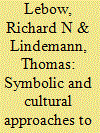| Srl | Item |
| 1 |
ID:
170105


|
|
|
|
|
| Summary/Abstract |
Significant discrepancy exists between official Chinese and EU trade statistics on the magnitudes of the China-EU trade in goods as well as in services. While the discrepancy of China-U.S. trade surplus has been thoroughly studied by scholars and policymakers, the discrepancy of China-EU trade surplus is barely discussed in literatures. This may lead to seriously bias in understanding China-EU trade relationship, and even cause unnecessary trade friction. In this paper, we discuss the reasons behind the discrepancy of China-EU trade and quantify the extent to which the discrepancy is contributed by transportation costs, re-exports and their markups. We also employ the input-output tables of both EU and China, and measure the China-EU trade balance of goods and services in both domestic value-added (DVA) terms as well as in gross terms. The discrepancy of China-EU trade balance in goods (and services) still exists after adjustments, but is significantly reduced. With the adjustments on price and re-exports, in 2016, the discrepancy of China-EU trade in goods and services of Chinese release over EU release would shrink from an initial estimation of US$90.6 billion to an estimation of US$20.4 billion in gross terms, and further to US$15.8 billion in value-added terms.
|
|
|
|
|
|
|
|
|
|
|
|
|
|
|
|
| 2 |
ID:
132919


|
|
|
|
|
| Publication |
2014.
|
| Summary/Abstract |
This forum offers a symbolic and cultural approach for understanding the outbreak of World War I that stresses the interactional and symbolic-cultural aspects of German decision makers' brinkmanship during the July crisis of 1914. Contrary to excessive structuralist accounts, the contributions focus on what actors 'do' and 'feel' during a crisis. In the German-Austrian case, symbolic interactions during the July crisis were strongly marked by challenges to the 'face' of decision makers. The second theme of the Forum is to question the purely 'material' nature of those structures traditionally referred to as permissive for World War I. Structures, in fact, are symbolic, too. Like theories on status discrepancy, the Forum stresses the impact of 'responsibility gaps'. However, the contributors also point to the emotional aspects and internal legitimacy problems caused precisely by those status lags.
|
|
|
|
|
|
|
|
|
|
|
|
|
|
|
|